Editor’s Note: LebTown occasionally runs articles shared with us by The 19th, a non-partisan and not-for-profit newsroom focused on the intersection of gender, politics, and policy. Read more about The 19th here.
By Chabeli Carrazana & Jessica Kutz
After a decade of working on a university farm in Vancouver, Canada, Amy Frye and her husband, Jacob, were ready to go it alone: In 2015, they started to build their own farm in Skagit Valley, Washington. Around that same time, they also started to think about growing their family — Frye was almost in her mid-30s — but they had no idea how they’d be able to do both at once.
Frye remembers the farmers’ gathering where she first asked her peers: Farming and kids — how do I make it work?
Everyone laughed. They would “figure it out,” they were told.
But when Frye’s first child, Leo, was born in January 2017, she remembers feeling wholly unprepared for the experience. The Fryes had already had to take on their first employee when she was pregnant — though she’d still driven tractors and tried to squeeze into work wear that wasn’t designed for her growing belly.
They tried to piece together what child care would look like for their son. They wanted to keep him with them as much as they could, but how could they when they were surrounded by dangerous machinery, when there was nowhere to pump? And, even if they wanted to leave him in the care of others, where would they take him when rural child care options were already so scarce?
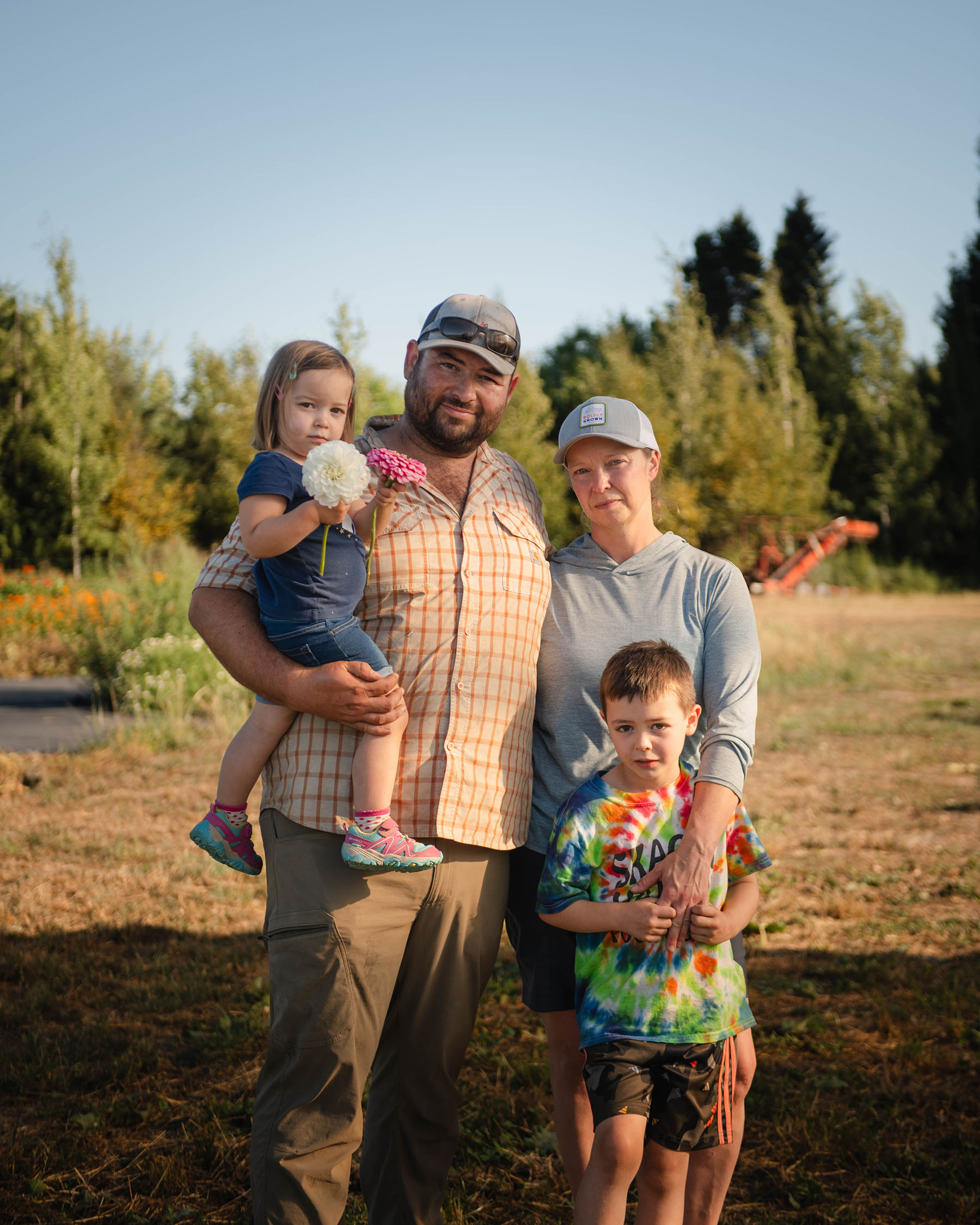

Women, who represent a fast growing share of farmers, are often served an idyllic vision of farm life on social media, of toddlers feeding baby goats and harvesting flowers and waddling through the fields. They have been promised that they could have a farm and a family. Frye quickly learned that those algorithmic portraits didn’t reflect reality.
“This expectation of, ‘You should be able to have your kid with you on the farm,’ I thought that and I had internalized that, and when it was really challenging and I became a parent, it wasn’t really working for us,” Frye said. She thought then: “Maybe it doesn’t work for as many people as it appears to on Instagram. It’s impossible to focus and do your job and it’s just not safe in many ways.”
Farming is one of the only occupations in the country in which children are expected to be at the worksite, experts say, and farmers, who are self-employed, struggle to access any paid leave at all. That’s all stacked on top of a culture that has long made families — particularly women — feel like they couldn’t talk about what that child care reality actually looked like.
The Fryes’ care situation consisted of a complicated mashup of Frye, her mother and a nanny before her son went to daycare in 2019. Because of her time spent caring for her son, her employees had to take on more while she was out.
By the time Frye had her second child, a daughter named Ayla, in 2020, she was deep in the process of building a 30-acre organic vegetable farm with 14 employees that now counts grocery stores and wholesalers as clients. But her business strained under the child care burden. She, the main farmer, had to pull back on her involvement.
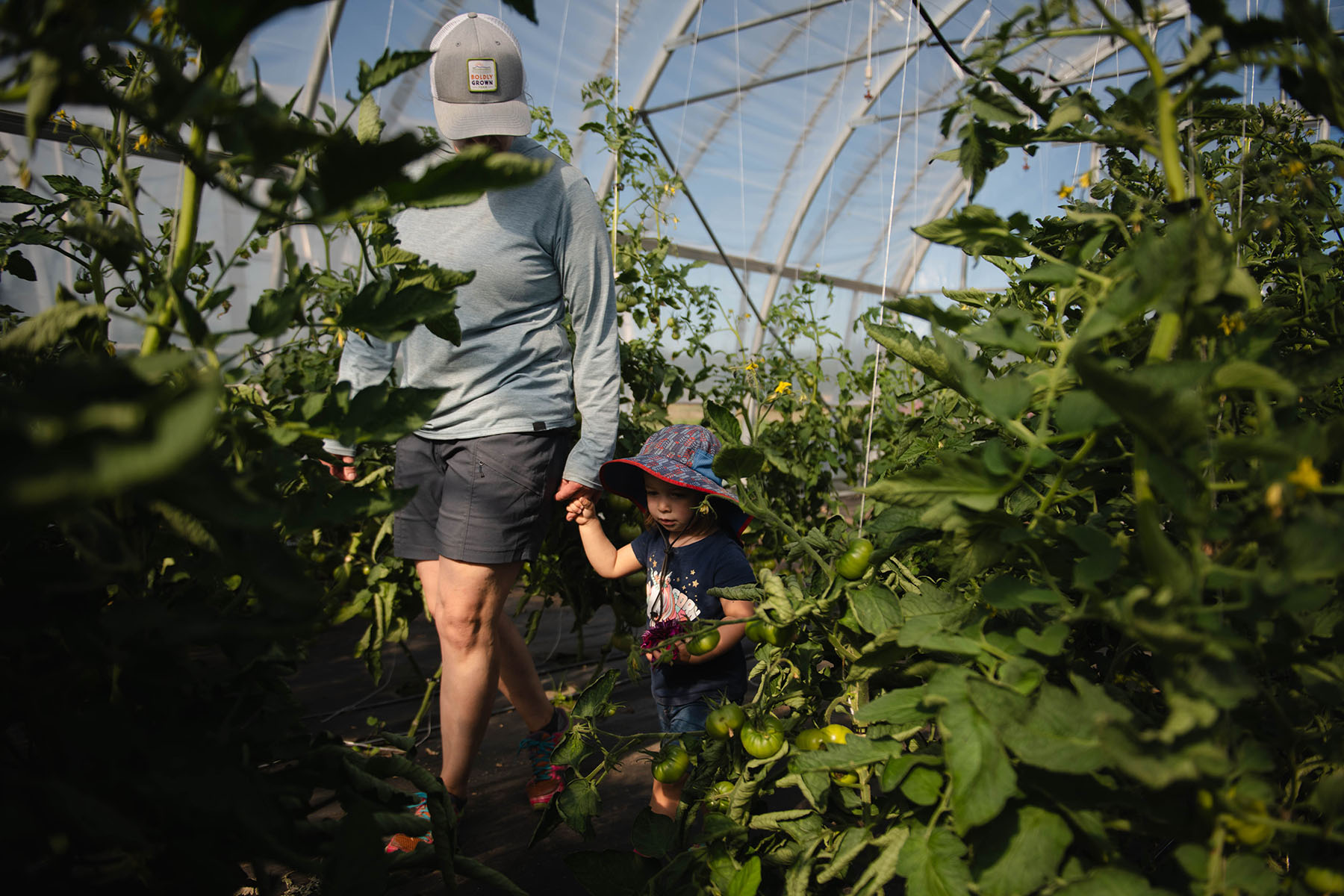
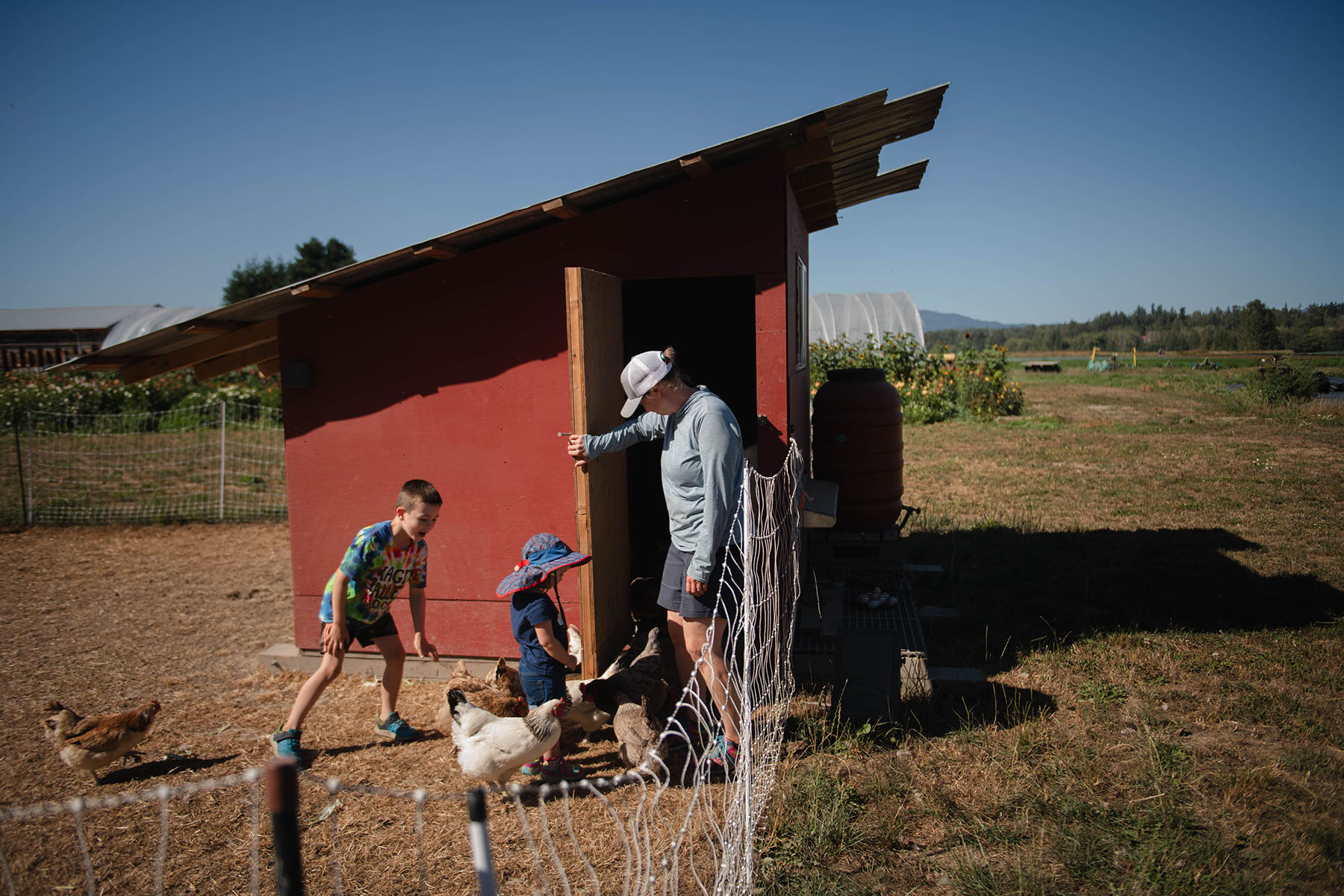
“There was no schedule, it was insane. Where I needed to be at any point in time is where I was,” Frye said. “There was a lot of mom guilt on one side of, ‘I should be spending more time with my kid and not working so much,’ and boss guilt on the other side: ‘I should be working more.’”
It was also isolating. Frye fell into postpartum depression that went undiagnosed for a year.
Eventually, both kids were able to go to daycare — the option nearest them, one of the only ones Frye was even aware of, only took kids after they turned one. In 2022, with both children in daycare and some help from a nanny, the family racked up nearly $30,000 in child care costs, 28 percent of their household income. Frye’s husband works a separate job off the farm to help sustain them.
Looking back now, “in an ideal world I would not have maybe had kids so soon after having a farm. Having a kid just hit me like a ton of bricks,” Frye said. “Our approach has been very haphazard and super stressful and expensive.”
Her story is painfully common: About 74 percent of farm families had difficulty securing child care because of lack of affordability, availability or quality this year, and 77 percent reported having to make changes such as decreasing their working hours or hiring additional employees as a result of child care challenges. Half reported that having access to child care was important to maintaining and growing their farm. But women were almost twice as likely as men to report that child care was an important factor in farm decisions.
That data, the only of its kind and the result of a decade-long effort to bring attention to farming and child care, helped the issue reach the highest echelons of the farming world this year:
For the first time ever, the American Farm Bureau and the National Farmers Union, the two largest farm organizations, have put child care as a priority in the farm bill, the massive federal spending legislation up for renewal this year that helps define food production policy and federal assistance for farmers and farmworkers.
The bill, which advocates hope will be finalized by the end of the year, is expected to contain a version of Ohio Democratic Sen. Sherrod Brown’s Expanding Childcare in Rural America Act. The bipartisan bill would tap into the Department of Agriculture’s (USDA) rural development funds for projects that improve access, quality and cost of child care in rural areas. The bill has a slew of Republican cosponsors.
“The idea is really that there’s a lot of places that know what they need, but they need the funding. So how can we just help them get the funding?” said Shoshanah Inwood, one of the researchers responsible for raising the alarm on the need for child care for farm families. For the past decade, she and research partner Florence Becot have done the only comprehensive studies on the subject, conducting surveys and focus groups with women farmers.
Inwood, an associate professor of rural sociology at Ohio State University and a former farmer, said the issue is “very gendered” because women have been taking on the care work in the absence of policy solutions. With the research, she and Becot “were able to demonstrate this is a systemic issue that we are not talking about that is threatening the investments that the USDA is making into growing the next generation of farmers,” she said.
The proposal doesn’t introduce any new money, and it doesn’t solve the child care crisis afflicting the nation overall. But any programs, nonprofits or businesses that want to address the lack of child care in rural parts of the country could apply to tap into this money. It could help build new centers, expand existing ones or improve care. It also helps give the USDA a blueprint for child care initiatives, Brown’s office said, allowing individual communities to respond to unique needs.
Already, much of the country is in a child care desert, where there are more than three kids under age 5 for every licensed child care spot available, but in rural America, home to about 2 million farms, those issues are amplified. About 59 percent of rural communities are in child care deserts, compared with 56 percent of urban neighborhoods and 44 percent of suburban neighborhoods. Rural families spend about 12.2 percent of their income on child care compared with 10.8 percent spent on average by families in metropolitan areas, according to the Center for American Progress.
Bryn Bird, an Ohio Farmers Union board member and a farmer who worked with Inwood to draw attention to families’ child care needs, said the changes in the farm bill can help communities like hers in central Ohio solve long-standing problems that have impeded growth in the child care sector.
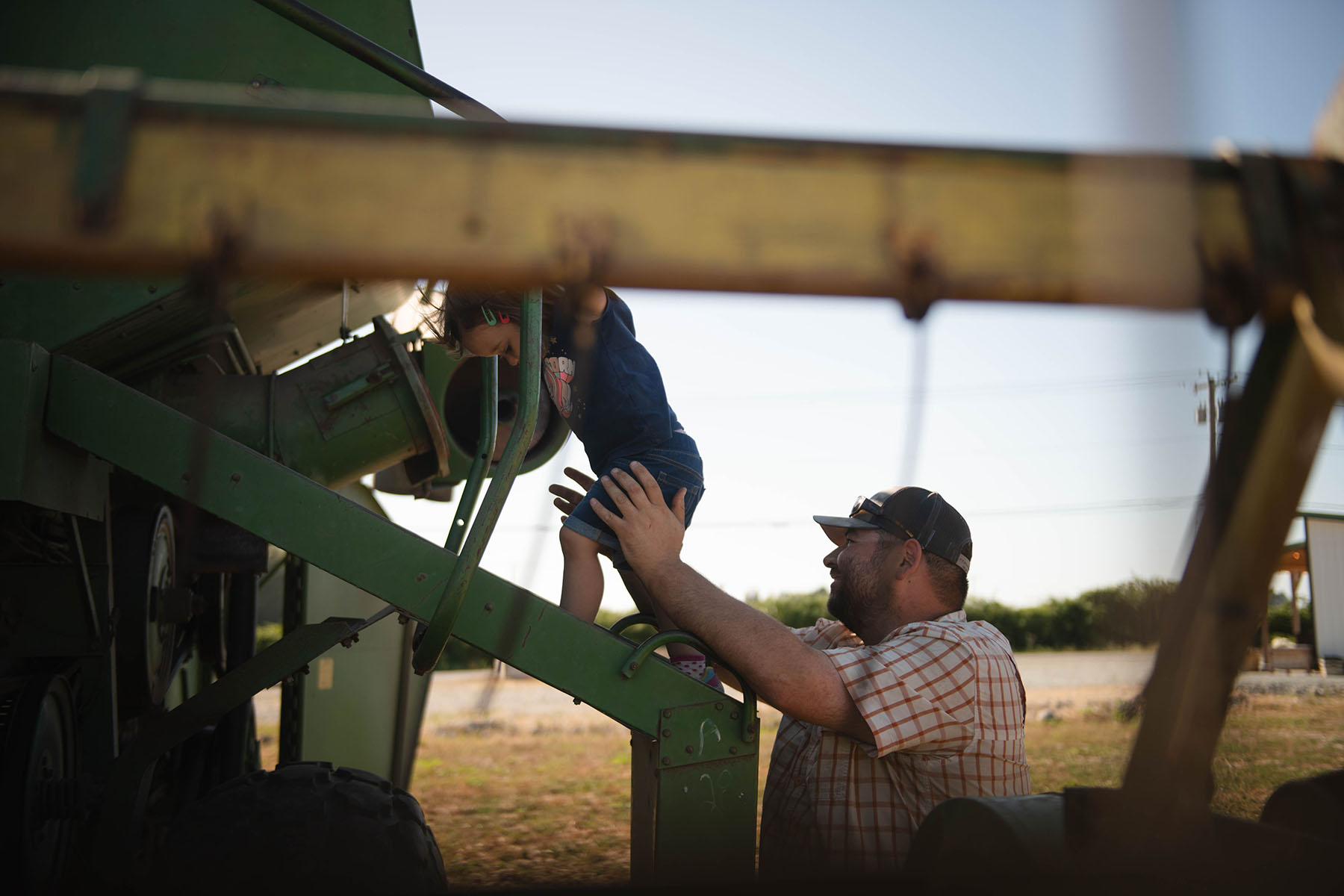
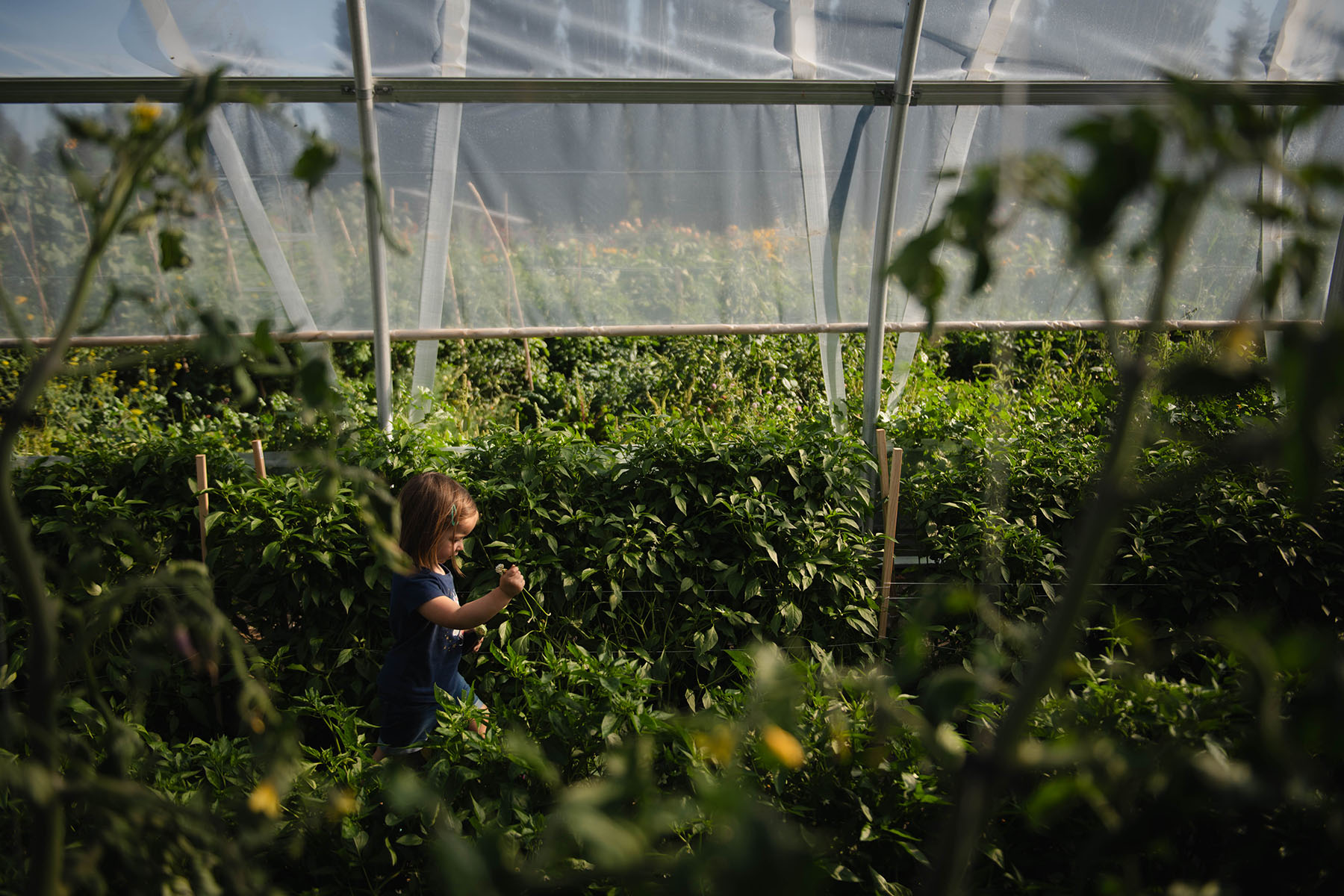
For example, a child care facility has been looking to expand to serve more families near Granville, where Bird operates a family produce farm with her husband and daughters along with her brother and his family. But the center is on well water and septic, and it would have to connect to the nearby village’s water and sewer system to be able to offer more child care spots. The expanded rural development funds could be the answer. Money could also go to help at-home child care providers get licensed, a common request from parents and providers, which could allow them to take more kids, expand and access government funds, Bird said.
“When you make those changes, while it seems small on paper, it actually does work well,” she said.
Becot, the rural sociologist and an associate research scientist at the National Farm Medicine Center who worked with Inwood on the research, said that when they were conducting interviews with farmers, she was often struck by the “rigmarole” that women had to endure to secure child care, but also the ideas they offered for improvements: daycares on the way to the farm, more options in family- and home-based care, daycare hours that more closely reflect farmers’ and farmworkers’ working hours. A farmworker who works seasonal shifts can’t sit on a waitlist for a year if they are moving from place to place, so flexibility is key for those families. The farm bill could get at some of that by allowing existing centers to add new hours and bring on more staff, for example.
Solving child care is “absolutely fundamental to the long-term viability of women-run farms,” said Gabrielle Roesch-McNally, the director of the Women in the Land project at the American Farmland Trust, a nonprofit that works to protect farmland.
Already, women tend to run smaller farms with less revenue and are also more likely to juggle another job off the farm to ensure their family has essentials like health insurance, according to Women in the Land’s research. The added burdens of child care access can be what cause women to leave the field, Roesch-McNally said.
“At a certain point, the pull on their time, be it through their children or potentially other care duties, does have an impact on the viability of their farm,” she said.
Investing in child care will be important as older White men leave agriculture, and a new, more diverse population is stepping in. Between 2012 and 2017, the number of women operating farms grew 27 percent while the number of men producers dropped 1.7 percent, according to the most recent data from the Census of Agriculture. Native Hawaiian and Pacific Islander operators grew by 23 percent, Latinx operators grew by 13 percent and Black operators grew by 2 percent in that time period.
“It feels like this image of the American farm family has very explicitly been used as a colonial tool,” said Katie Kulla, a farmer in Oregon with two children who is writing a book about balancing farming and raising kids. “The whole western expansion, the Homestead Act, this romantic dream of raising your family up on a farm, there is a lot of white supremacy there and heteronormative stuff and gender stuff.”


Kulla has a distinct memory of sitting on an inflatable donut at the dining table writing checks, running payroll for her employees just a week out from a difficult delivery with her second child in September 2012. Even before that, when her first child was born in December 2009, Kulla, like many farm families, tried to plan the birth for the winter to minimize the impact to her business.
And, she, like many moms, also had to pull back working on the farm to raise her children. It’s long past due that the farm industry started interrogating that reality, and the system that forces women to make those choices, she said.
It’s also clear to her why child care didn’t come up in the farm bill sooner: “It was so assumed that moms would ‘figure it out’ — and that farmers are men.”
While much of the farm bill will be geared toward the needs of farmers, some of the changes could trickle down to improve child care options for farmworkers, a majority immigrant and undocumented population that lives in the same child care deserts but experiences more complex barriers to finding care due to both their legal and socioeconomic status.
A growing share of these farmworkers are women, who made up 28.1 percent of the workforce in 2021, up from 20.3 percent in 2006, according to the USDA. Half of the farmworkers surveyed in the 2019-2020 National Agricultural Workers Survey identified as parents.
In rural Washington, where workers spend the summer months picking cherries, pears and apples, the need for child care for farmworkers is dire. It’s one of the few places in the country where researchers have tried to better understand the issue. In a collaboration between area nonprofit The Community for the Advancement of Family Education — or CAFE — and the Pacific Northwest Agricultural Safety and Health Center at the University of Washington, 20 farmworker families were interviewed about their child care needs.
For most families that were surveyed, their only option was to leave their children in the care of a family member or older sibling at home. When that option fell through they resorted to taking their kids with them to work, said Yuribia Obeso, who previously worked as an outreach coordinator with CAFE.
“I heard of families taking their kids to work at the orchard, exposing them to all the pesticides in the orchards, not only that but the heat,” she said. “They really expose their kids to a lot of danger.”
But with only a few care options in the region it is sometimes their only choice.

Wildfires in the region have added to the concerns over having access to adequate child care, said Savannah D’Evelyn, an environmental health and bio-social scientist who worked with Obeso on this project.
“There are parents that were really worried about their kids back at home with an older sibling, because they wouldn’t have gotten notice if their homes were evacuated [from wildfires],” she said.
Being in a weather-dependent industry also presents obstacles to farmworkers’ livelihoods, which can make it more difficult to pay for child care. Wildfires, drought and floods can all destroy crops, impacting not just the producer but the workers. Between 2021 and 2022, around 12,000 agriculture jobs — both seasonal and permanent — were lost due to drought, according to a report prepared for the California Department of Food and Agriculture.
“In California and in agriculture everywhere in the U.S. right now, due to weather sometimes you are told not to come to work. And sometimes daycares won’t refund you,” said Amy Tamayo, policy and advocacy director for Alianza Nacional de Campesinas, a national women’s farmworkers organization.
Already farmwork is low paid, with wages in 2020 averaging around $14 an hour for farmworkers with H2A visas, a program for migrant workers. Twenty-one percent of farmworkers live in poverty, according to the National Agricultural Workers Survey.
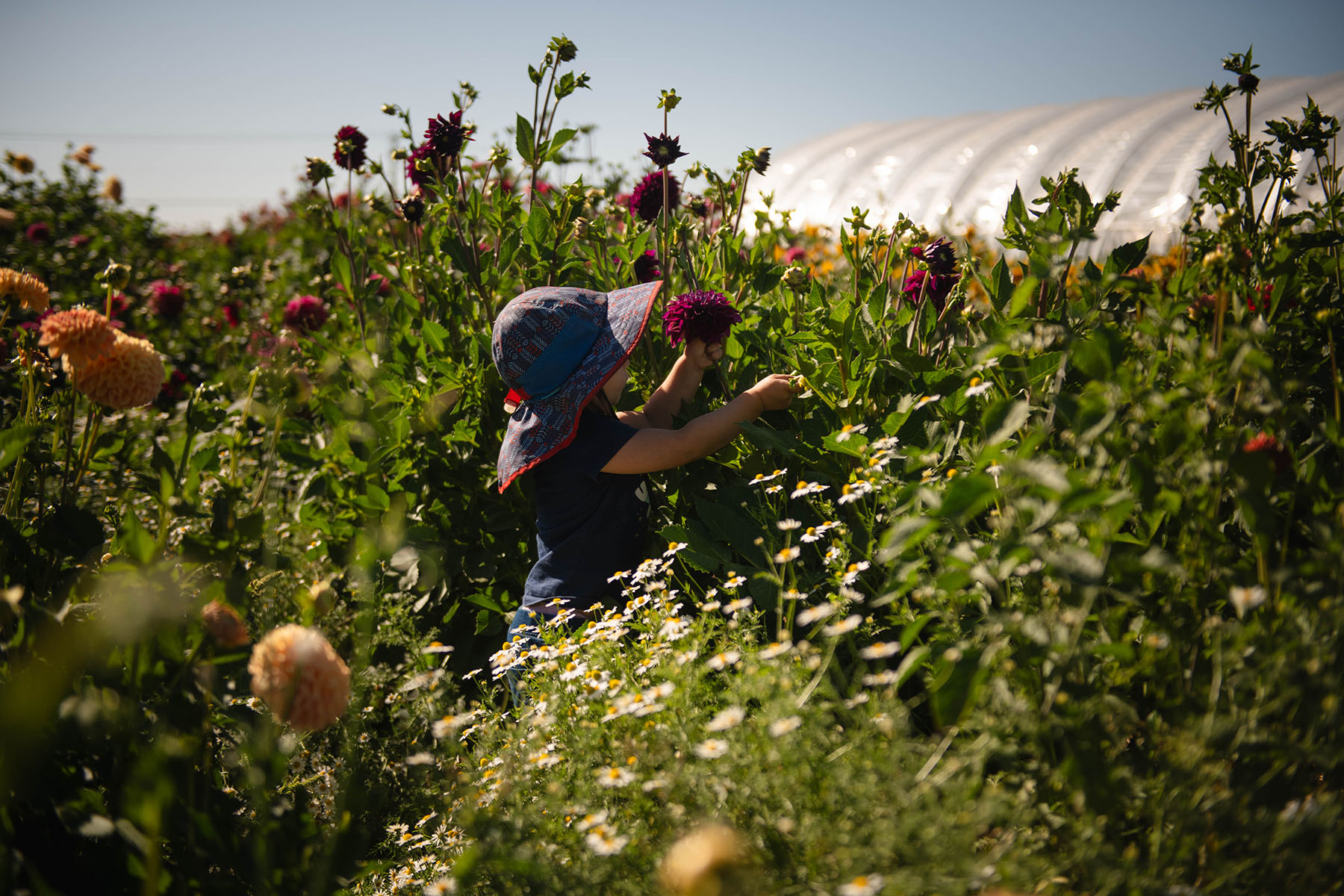
There are existing programs concentrated on helping farmworkers that could benefit from the farm bill. Migrant and Seasonal Head Start, a federal program that was started in 1969, offers subsidized child care to the more than 30,000 children and families of migrant and seasonal farmworkers. But it fails to meet the high demand for child care. The farm bill could open up more funding for programs that take Head Start dollars, expanding their reach.
Amy Liebman, chief program officer with the Migrant Clinicians Network, points to a promising model in Florida called the Redlands Christian Migrant Association that meets the unique challenges that farmworkers face. It has received funding from growers who have recognized the urgency of fixing the problem.
“They really sort of walk this fine line of nurturing relationships with farmers and growers, and recognizing that it’s a really important win-win for the families when they have a safe place for their children and for growers who need a labor force,” Liebman said.
The association started over 50 years ago and is a key lifeline, reaching migrant children in 21 rural counties in the state through 68 centers. It serves as one of the few options farmworkers in the state are able to consistently tap into, said Jeannie Economos, the pesticide safety and environmental health project coordinator for the Farmworker Association of Florida.
The program is curated for farmworker families: It recruits staff from within the farmworker community, often moms, to provide culturally relevant and bilingual care, serves three meals a day, provides transportation to and from its centers and operates outside of traditional daycare hours to meet the needs of migrant workers.

“The migrant family needs a 10- to a 10.5- to 12 hours a day because of the work that they do,” said Isabel Garcia, executive director of Redlands Christian Migrant Association.
About 60 percent of the Redlands program funding comes from the federal Migrant and Seasonal Head Start, and could potentially tap into rural development funds through an expanded farm bill to help improve or fund further services. That would be critical: not all families that need that program can access it or get into it. In a 2017 study conducted by Liebman and other researchers in Florida, 93 percent of farmworker parents surveyed said they had difficulty accessing child care.
Those that can’t find adequate care often have to pick out a woman in the farmworker community who, instead of working in the field, will be paid to serve as an unlicensed caregiver, Economos said. To be able to create the kind of tailored solutions those families need, there needs to be funding to expand options beyond one program in an entire state, Economos added.
“I understand the complexity of it,” she said, “but it doesn’t make the need any less or the importance of it any less, because these people are feeding America.”
In 2018, the only child care center in all of Rensselaer, Indiana, a farming town of about 6,000 people located 85 miles south of Chicago, closed. Adam Alson, a corn and soybean farmer, was a few years into running his family business and had a child then left with no child care options.
The Alsons went from enjoying the stability of a licensed child care center to cobbling together care between various unlicensed home care programs and family help, eventually finding a program that was a 45-minute drive to the next closest big city. It took time away from their work on the farm and stagnated their business.
And so Alson decided to lead an effort to bring child care back to Rensselaer. Over several years, he worked to secure a partnership with a child care provider to run a new center, got the regional health system to lease a building, convinced the local and county government to designate a portion of local income taxes and redevelopment funds for the center, and recruited business owners and community members to help fund and sustain it.
For all of them, Alson was able to make a compelling economic case. The health system needed to help retain workers, and the building was conveniently located across the street from the hospital. The local and county government, as well as the business owners, needed help retaining young families. Businesses were losing good workers because of child care. Alson used Inwood and Becot’s data to make that case.
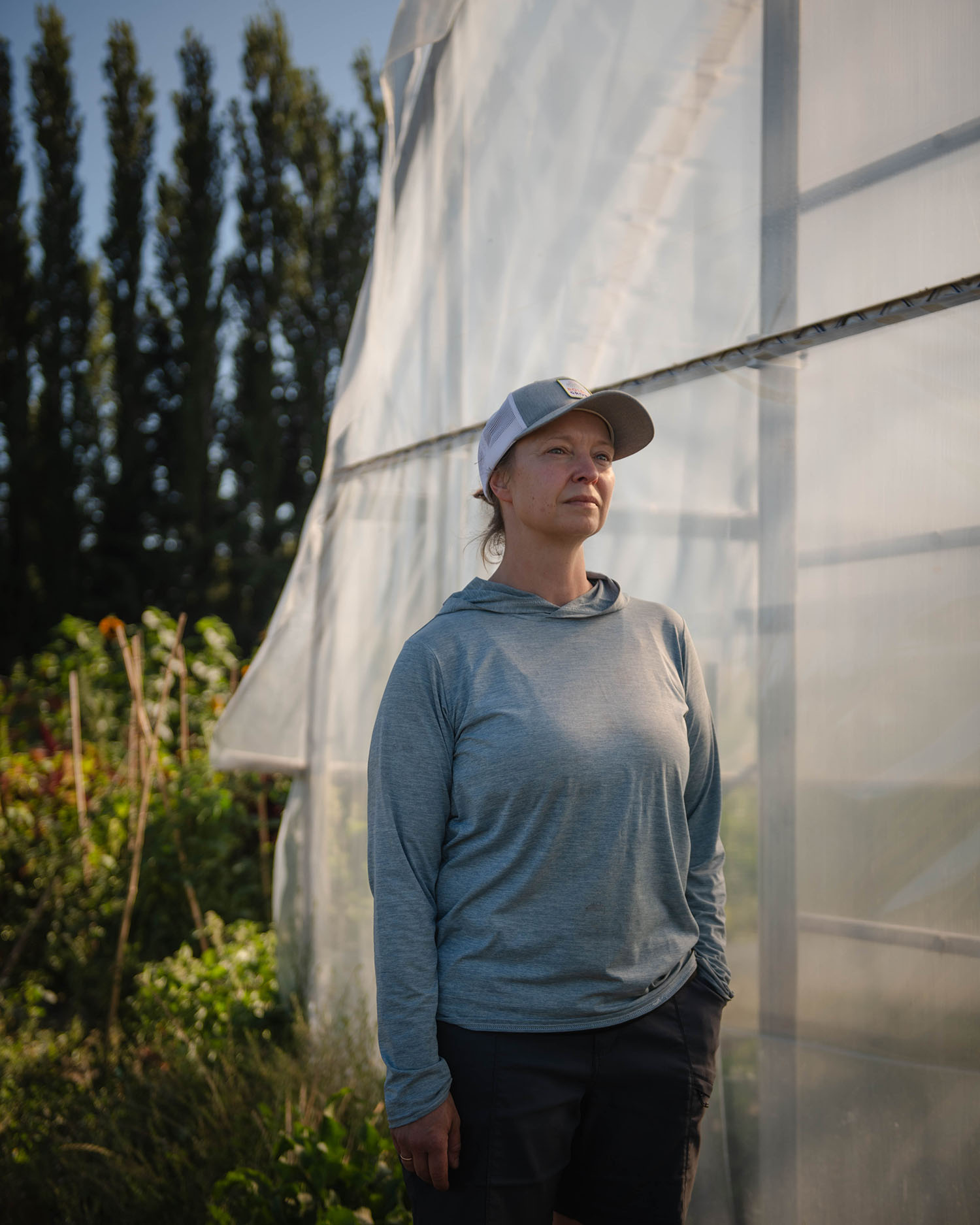
Appletree Rensselaer Early Learning Center opened in March with space for 75 children. For now, the center runs five days a week from 6 a.m. to 6 p.m. and accepts child care vouchers to lower costs. But the goal is to offer more extended hours for farm families and lower costs even further. Expanded grants under the farm bill would allow Appletree to raise wages for teachers, he said, while still keeping costs low for parents.
For Alson’s community, the center had enormous economic implications. That’s the kind of impact he wants lawmakers in Washington, D.C., to understand.
“Making the connection between community viability and economic development and investment in child care … I’m encouraged by both the acknowledgement that the availability of quality and affordable child care is essential infrastructure for rural communities,” Alson said.
For many of the women in the industry, it feels like now that the issue of child care is being elevated, there is no turning back. Acknowledging the challenges with child care also means acknowledging all the invisible labor women farmers and farmworkers have done to make it work for so many decades.
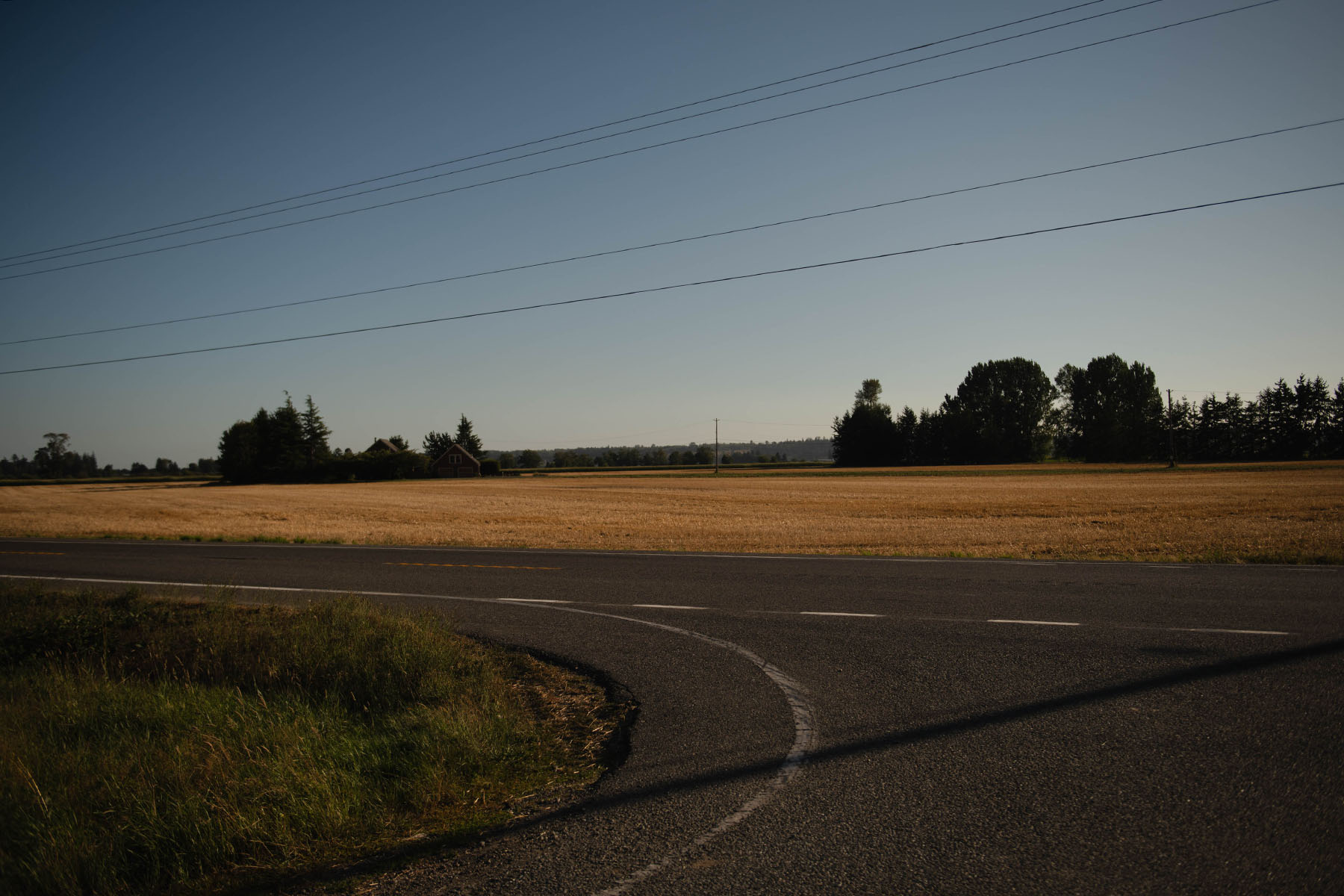
“It always does seem like, the kids are sick, it falls to mom, or there is a call from school, it falls to mom. That’s been a contention point even in my own marriage. It’s just something that is so ingrained and even when you have a partner who objectively recognizes it, making changes is super challenging,” Frye said. “I’m more flexible in some ways, but often it feels like my work is undervalued because it’s the one that gets pushed around.”
So far, there have been “no great solutions,” she said. “I feel like there is this underlying, simmering resentment from a good portion of the population on all of this.”
Finally, it’s bubbling to the surface.
The 19th is telling the untold stories of women and LGBTQ+ people. Subscribe to their daily newsletter.


































